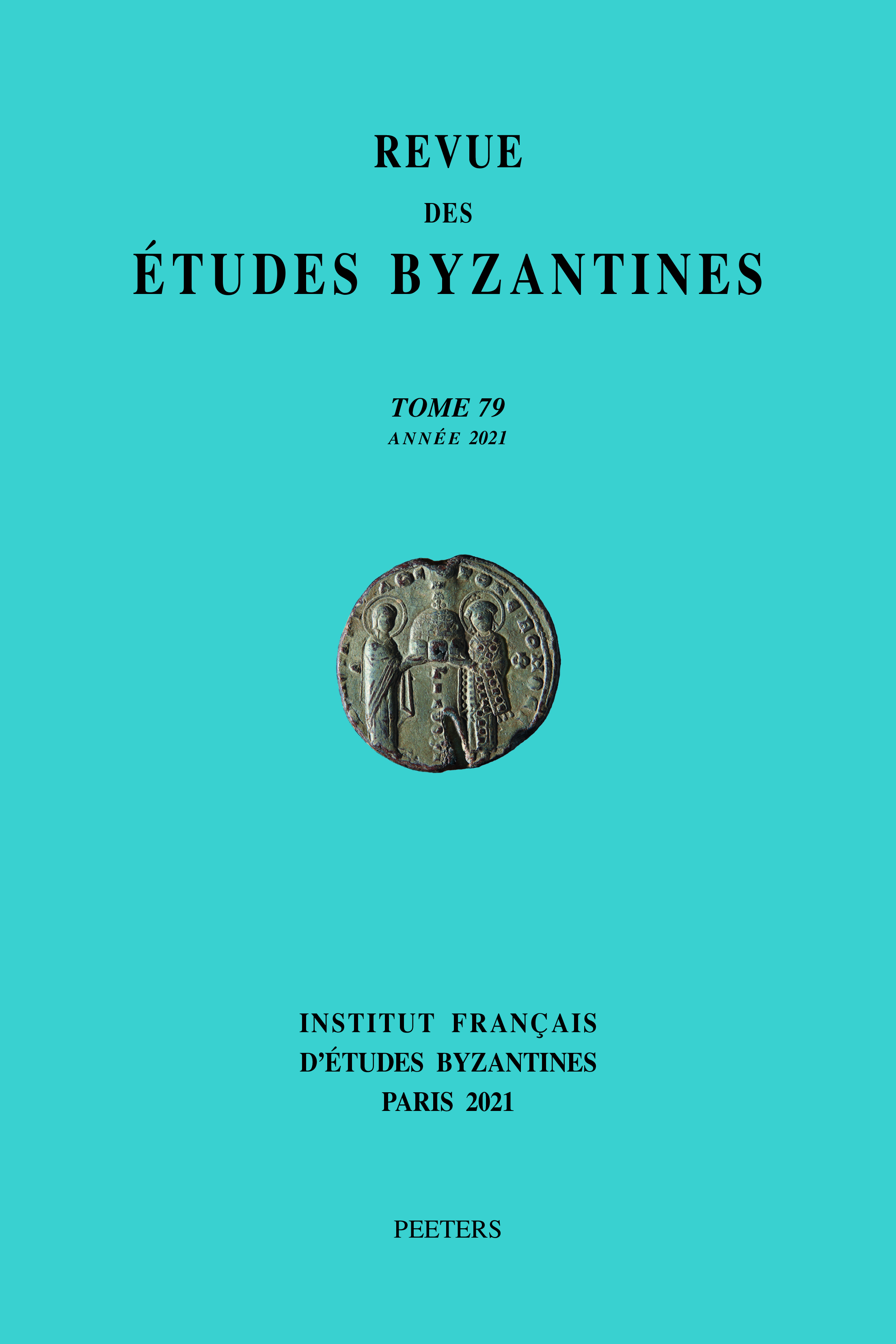 previous article in this issue previous article in this issue | next article in this issue  |

Preview first page |
Document Details : Title: Burials in Prehistoric Mounds Subtitle: Reconnecting with the Past in Early Medieval Greece Author(s): CURTA, Florin Journal: Revue des Études Byzantines Volume: 74 Date: 2016 Pages: 269-285 DOI: 10.2143/REB.74.0.3189079 Abstract : There has been very little work on burial practices in Middle Byzantine Greece (ca. 800 to ca. 1100), despite the considerable accumulation of archaeological evidence. Some graves, such as those planted in Mycenaean burial chambers in Agia Triada or the Mycenaean fortification in Tiryns appear to appropriate ancient monuments symbolically. This is also true for burials inside prehistoric mounds, such as the ones found in northern Greece (Spilaio, Parapotamos) and southern Albania (Kuçi i Zi, Piskovë). This sudden interest in old barrows is documented during the 9th century especially in those borderlands of the Byzantine themes in the Balkans, which experienced considerable military and political turmoil. The practice of burying the dead in prehistoric monuments may have been a way to claim not only ancestry, but also rights to the land, especially in those regions from which large numbers of people were forcefully evacuated every decade or so, when those regions changed hands during the Bulgar-Byzantine wars. The barrows may have provided stable loci to preserve a sense of community in a shifting landscape. Peu de travaux ont été consacrés aux pratiques funéraires de la Grèce mésobyzantine (ca 800-ca 1100), malgré l’accumulation considérable de témoignages archéologiques. Certaines tombes, comme celles installées dans les chambres funéraires mycéniennes à Agia Triada ou dans la fortification mycénienne de Tirynthe, semblent s’approprier symboliquement ces monuments anciens. Ceci vaut aussi pour les inhumations dans des monticules préhistoriques, telles celles trouvées dans le nord de la Grèce (Spilaio, Parapotamos) et le sud de l’Albanie (Kuçi i Zi, Piskovë). Cet intérêt soudain pour les anciens tumulus est attesté au cours du 9e siècle, en particulier dans les régions limitrophes des thèmes byzantins des Balkans, qui connurent d’importants troubles militaires et politiques. La pratique consistant à enterrer les morts dans des monuments préhistoriques a pu être un moyen non seulement de revendiquer une ascendance mais aussi des droits sur la terre, en particulier dans des régions où un grand nombre d’habitants étaient évacuées de force à peu près tous les dix ans, lorsque celles-ci changeaient de main durant les guerres bulgaro-byzantines. Les tumulus pourraient avoir fourni des emplacements stables pour préserver un sentiment communautaire dans un environnement changeant. |
|


